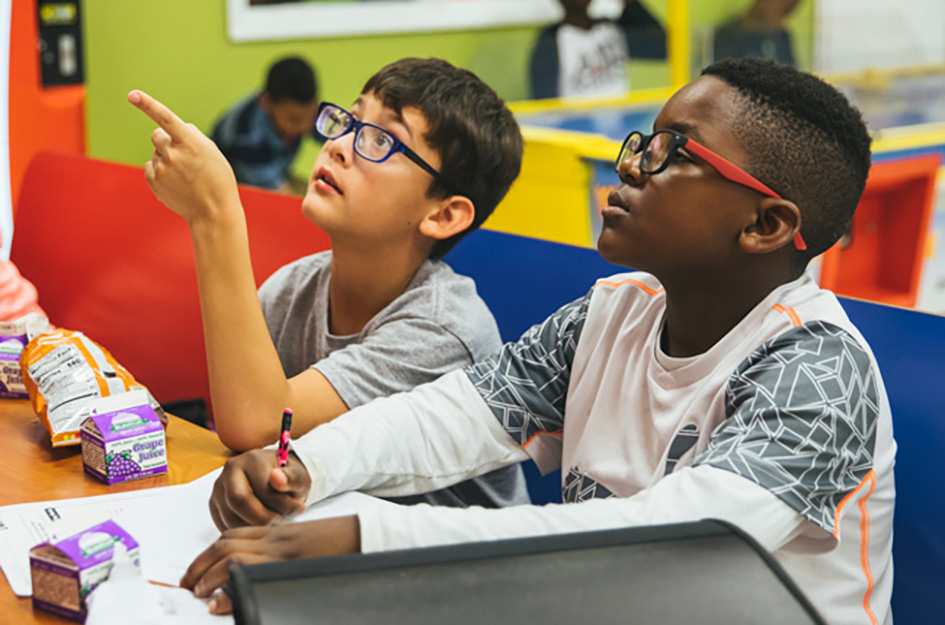As a kid, there’s no sweeter sound than the last bell on the last day of school before summer break. But for a lot of low-income parents, that’s the sound of uncertainty as the essential resources provided by schools — supervision, safety, nutrition and learning opportunities — are suddenly lost for months.
For students of low socio-economic status, the loss of learning over summer break can be staggering. As Review of Educational Research notes, most youth lose about two months of grade-level equivalency in mathematical computation skills over the summer months. Low-income youth also lose more than two months in reading achievement, while their middle class peers make slight gains.
This learning loss can stack up from year to year, creating a chasm many low-income students struggle to cross. For kids already at a disadvantage due to lack of resources or opportunities, summer learning loss can prevent them from graduating from high school on time or at all.
That’s when Boys & Girls Clubs open their doors — because if time outside of school is the problem, out-of-school time programming is the solution. In fact, a 2015 study conducted by Metis Associates found that Boys & Girls Club programs like Summer Brain Gain not only halt summer learning loss but also lead to gains in math and reading for many young people! And on top of the academic boost, Clubs ignite new passions for youth.
Take STEM for example. Summer is the perfect time for the “STEM smoothie” that is computer science — an enticing blend of science, technology, engineering and math. Why hit the computer lab instead of the beach (besides the dramatically reduced risk of sunburn)? For one, learning computer science at a Boys & Girls Club is a blast, and it has only gotten more popular with kids. According to our 2017 Annual Report, a total of 915 Clubs (22 percent) reported they are implementing computer science programming with a total of 79,110 youth — a 225 percent increase in youth over since 2015.
Whether your student is building their own app or coding a game in JavaScript, they’re putting their imagination and problem-solving to the test, creating projects they can use and share. Plus, at Boys & Girls Clubs, kids of all different backgrounds get the opportunity to build their STEM skills — this critical exposure can reshape the future of STEM, especially since girls and people of color are historically underrepresented in STEM fields.
We already know that when you give kids a chance to experience STEM, they start to see a future in the field! In fact, our 2017 National Youth Outcomes Initiative reports:
- More than twice as many 12th-grade Club members express interest in a STEM career as 12th graders nationally.
- Moreover, the percentage of Club girls who express interest in a STEM career (51 percent) is more than three times greater than that of their same-aged female peers nationally (14 percent).
Besides all the fun to be had, another reason to hit up the computer lab this summer is that learning STEM not only gets students ahead of the next school year — it prepares them for college and career. And careers in STEM are as hot as ever; between 2017 and 2027, Change the Equation projects that the number of STEM jobs will grow 13 percent while non-STEM jobs will only grow 9 percent.
Plus, technology skills are essential for today’s workforce, whether you’re coding in an office or taking inventory on the factory floor. Studying computer science provides young people a better understanding of computational thinking and equips them with critical thinking and problem-solving skills that are useful across all careers.
Who would’ve thought computer science could do all that? For one, Boys & Girls Clubs of America and Microsoft. As part of a multi-year partnership funded by a $4.5 million grant, we have teamed up to develop a Computer Science Pathway that sparks the imaginations of kids and teens, builds their programming skills and instills a spirit of leadership and innovation. Because the skills build on each other, members at all levels of proficiency can learn, and with the digital platform MyFuture, any young person can practice on any computer they can find.
For Club members beating the heat this summer in their computer lab, we know they’re not only building academic skills to ace the school year, but they’re also forming interests that could shape their futures, as well as the future of the STEM industry. Summer learning loss, you don’t stand a chance.




